In this week's letter, I explore the cultural importance and magical properties of hair through myths, films, relics, and personal stories. Join me in unravelling the meaning behind our manes.
Shorn Tresses and Shifting Identity
What importance, if any, do you attach to hair? Your hair, the hair of others, or the symbolism of hair or lack thereof? Hair has threaded through my week since I read my poem A Lock of Lost Love (in last week’s letter) at the Lewes Wassail, in which a woman cuts off her long tresses with her husband’s axe, as an act of grief, and finds that she is empowered as she says goodbye to the old life bound up with her hair. We often get a new haircut or hair colour when we face a significant change in our lives, a divorce or the end of a relationship. Somehow, changing our hairstyle can feel like a new beginning. Having very fine hair which never grows long, and with a double crown of which I’m self-conscious, I’ve always been a little envious of people who can grow long, luxurious, and flowing locks. Hence my joy in wearing a wig. In my 20s and 30s, I often wore wigs to go clubbing or to parties. As a child growing up in the 70s, I remember my mother would wear wigs and hair pieces, as did my grandmother. I’ve revived my passion for false hair and have recently started playing with new looks through a range of wigs. Hats and hairpieces have always been a firm favourite too. Wigs and hats both have the bonus of keeping my head warm in winter.

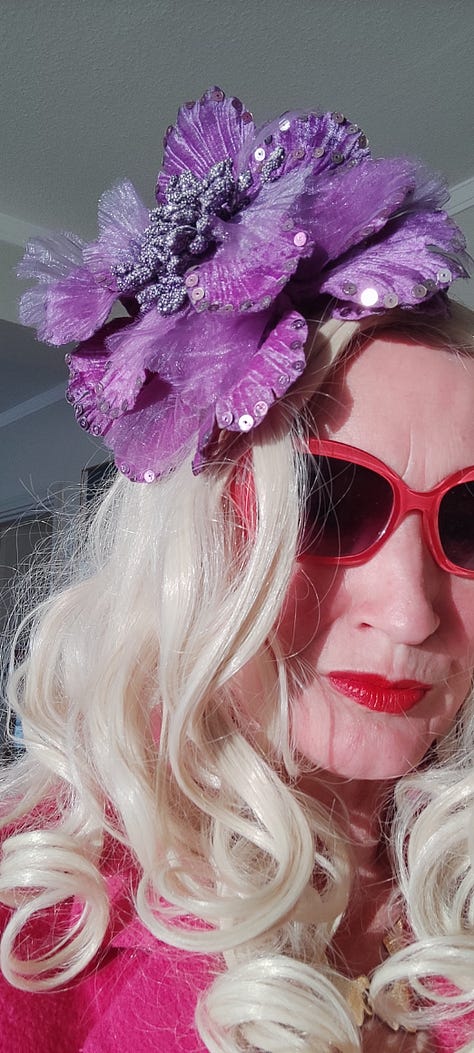
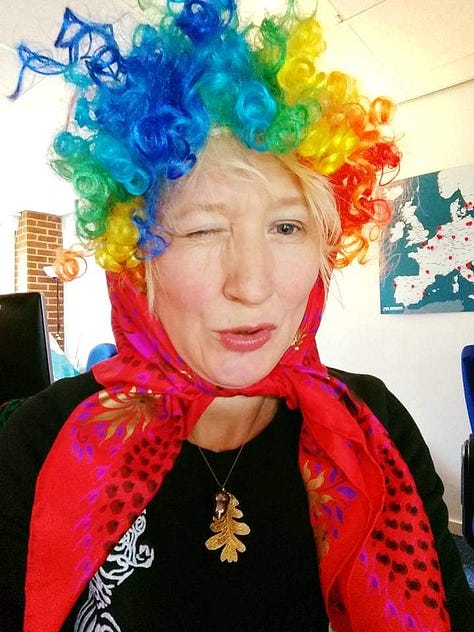
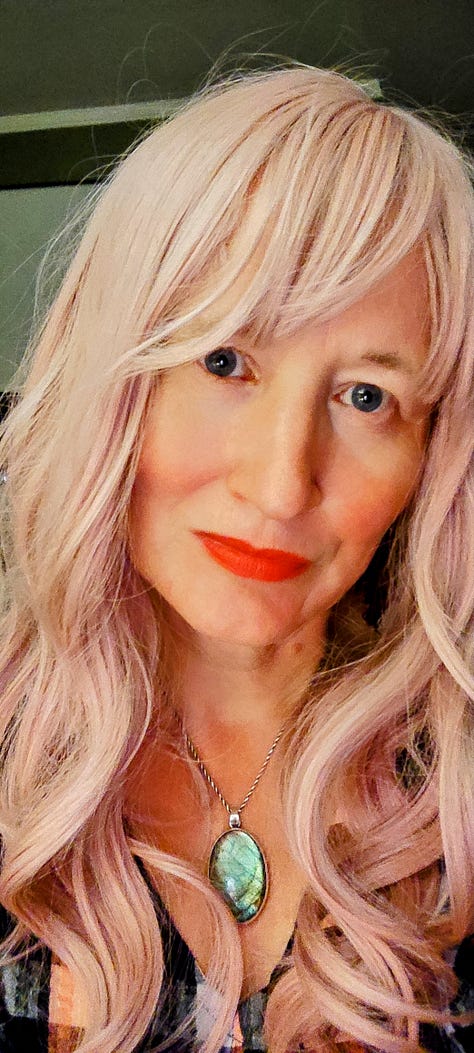
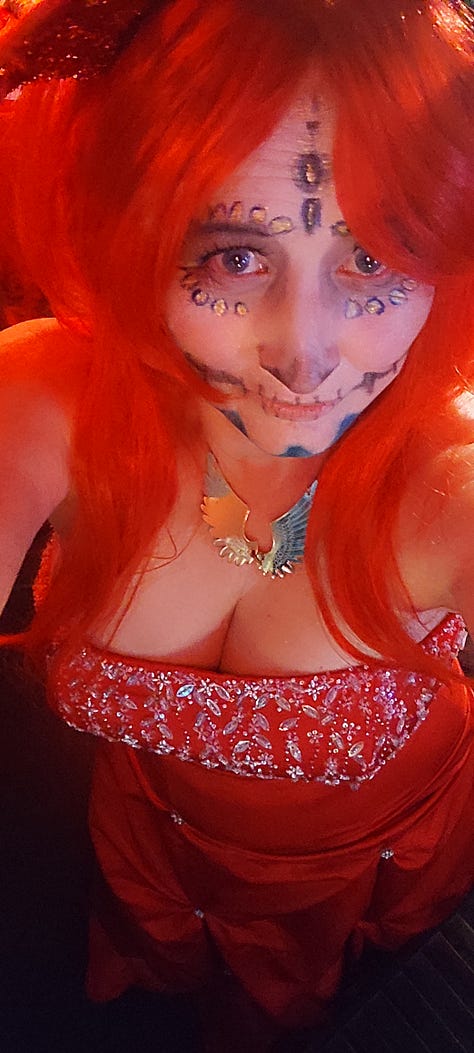
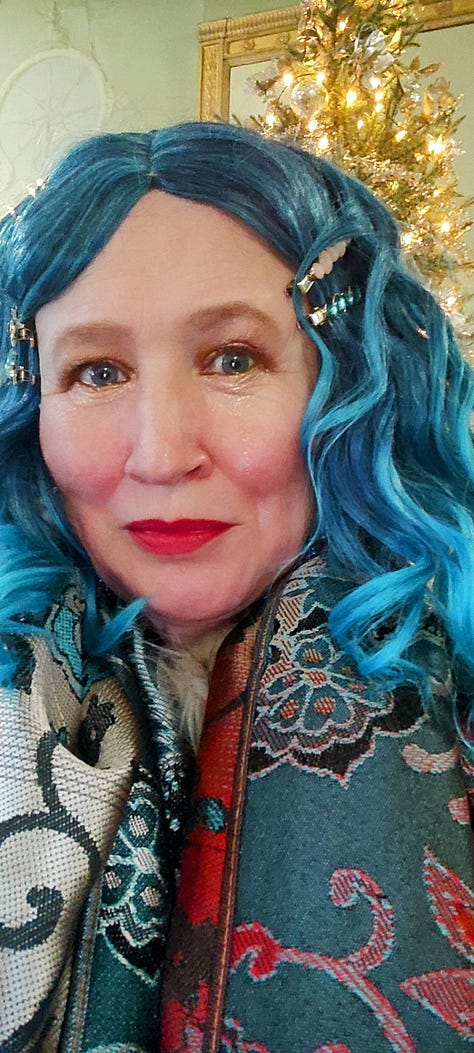
On Wednesday, I tuned in to a live online telling of a Norse myth which involved the theft of the most beautiful golden hair. In The Treasures of the Gods and Goddesses, part three of a year-long oral journey through the Norse myths, storyteller Andreas Kornevall told us the story of how Loki, the trickster, stole the hair belonging to Sif, the giantess wife of the god Thor. Sif is naturally distraught by the loss of her gorgeous long locks (women’s hair is always long in myths and fairytales) and as punishment, Loki must find her a new head of hair even more luxuriant than her own. In his quest to find the perfect replacement, he ends up gifting the gods a whole host of treasures, along with the most stunning new hair that continues to grow (not just a wig) for Sif. It is the colour of sunset, of sunrise, of the golden rays of heaven itself, and all the gods along with Sif are delighted.
Hair contains power; often the loss of hair can symbolise the loss of power. For example, Samson loses his superhuman strength when Delila cuts off his hair while he is sleeping. Rapunzel is cast out into the wilderness when her long ladder of a hairdo is cut off in revenge by the angry sorceress on discovering Rapunzel’s deceit and plans of escape with the prince. Women who were seen as traitors or witches often had their heads shaved in public as an act of punishment and humiliation.
Hair often represents physical strength, virality, and fertility, and can possess magical powers. In folklore, hair can be knotted or corded in forms of folk magic to cast spells, especially powerful if the hair used is from someone who is a target of the spell.
Demonically Shaved Heads in The Devils
Tonsure is the practice of cutting or shaving some or all of the hair on the scalp as a sign of religious devotion or humility, a tradition practised in many religious orders through the ages. After listening to the Norse myth online, I went over to Kemp Town to watch an uncut version of Ken Russell’s controversial 1971 film The Devils, showing in an intimate pop-up cinema in the basement of Bom Banes restaurant. Based on Aldous Huxley’s non-fiction account of The Devils of Loudun, the film tells of the supposed demonic possession, religious fanaticism, sexual repression, and mass hysteria that occurred in 17th-century France surrounding unexplained events that took place in the small town of Loudun. It centres on Roman Catholic priest Urbain Grandier (played by Oliver Reed) and an entire convent of Ursuline nuns, led by Sister Jeanne des Anges, (played by Vanessa Redgrave) who allegedly became possessed by lustful demons after Grandier made a pact with Satan. The events led to several public exorcisms as well as Grandier’s execution by burning.
In the film, lustful orgies of the nuns, naked with shaven heads, run amok in the Cathedral in the highly controversial ‘Rape of Christ’ scene. Their bald heads seem to add to their portrayal of supposed demonic possession. This contrasts with an early fantasy sequence, where Sister Jeanne imagines Grandier walking towards her barefoot across a lake, as Jesus, and as he steps ashore, she erotically dries his feet with her long flowing red hair, as Mary Magdelene dried Jesus’ feet after washing them.
The Devil’s had long been on my watch list, and I was not disappointed. I’m looking forward to the next instalment of Bom-Bane’s Folk Horror and Ice Cream Club, with a screening of Penda's Fen. Will hair be a feature I wonder?
Saintly Strands and Sacred Relics
Speaking of religion and the magical properties of hair, I also discovered this week that the 19th century Carthusian monastery of St Hugh’s Charterhouse, Parkminster, near Cowfold in West Sussex contains hundreds of saint’s relics, including three hairs said to belong to the Virgin Mary, along with fragments of cloth said to be part of her clothing. I’ve been conversing with one of the monks, who kindly sent me a photo of St Hugh’s relic, but sadly the prior would not allow him to share a photo of the Virgin’s relic. Neither am I permitted to visit in person to view the relics, as I am a woman. The Carthusians are the most extreme monastic order of hermits, founded by St Bruno in Cologne in 1094. Charterhouse is the largest cloister in Europe. It was built in the 19th century to accommodate two communities which were expelled from France. Its chapel spire is incredibly tall, and I can see it from my special magical spot on top of the South Downs at Newtimber Hill.
What hair-raising stories or anecdotes do you carry in your knapsack? What does hair mean to you? Do post in the comments below. The more I think about the cultural importance of hair, the more I want to dive deep into its symbolism. But Storm Isha is raging outside, and it is time for bed.
Until next week’s letter, I wish you well.
With lots of love
Serena xxx
Further reading and watching
The Northern Spirit House - The Mead of Poetry
Hell on Earth: The Desecration & Resurrection of The Devils 2004

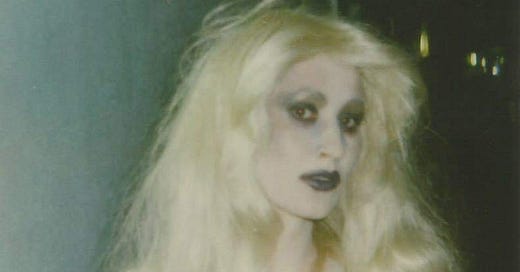


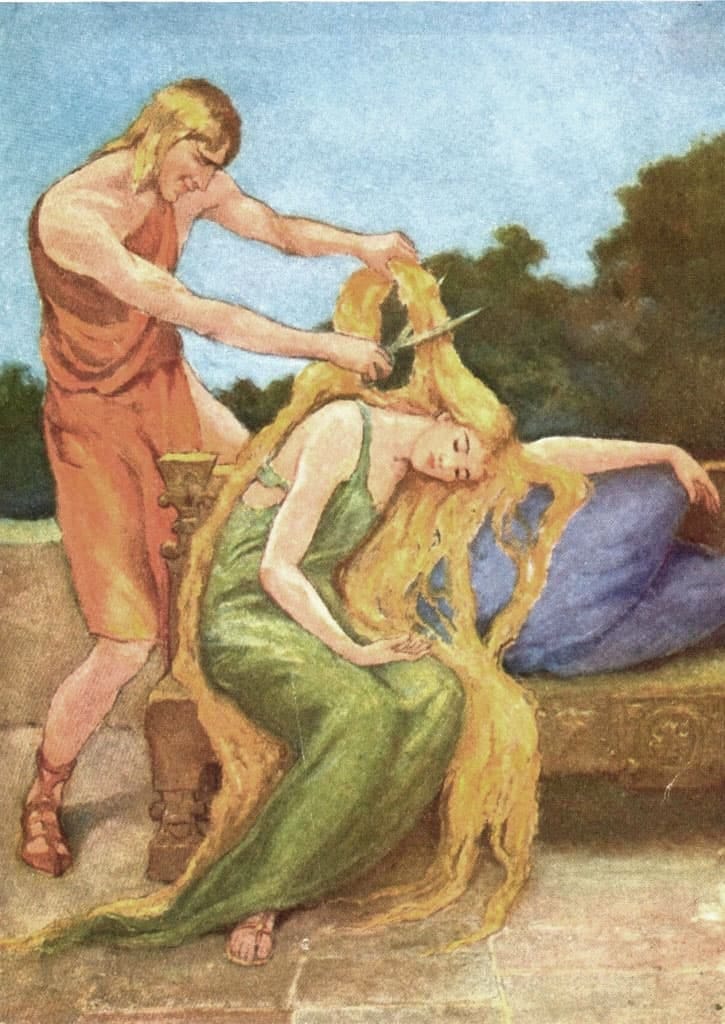

I love this week's offering. Hair has always been a big deal for me. Jo too. My mother was a hairdresser. I grew up surrounded by scissors, combs, curlers, tongs, dyes and sprays. I remember having to carefully follow my mum's instructions as I brushed foul-smelling paste from the plastic mixing bowl into her roots. And those weird rubber hats full of holes she pulled hair through with a little hook in order to add highlights before they invented foils. Then along came punk and the ideas my brother and I had for our haircuts began to conflict with our mother's. One Christmas we were not allowed in the house unless we wore a hat due to the Joe Strummer mohawks we decided looked the business. "There is a time to comb and a time to cut." that phrase has stayed with me since the School of Myth.